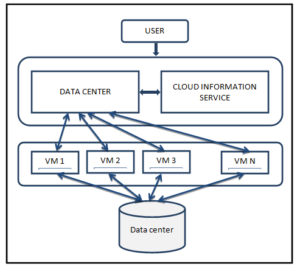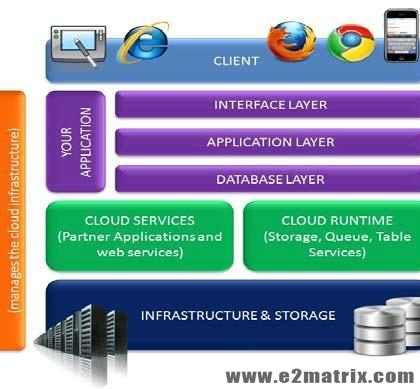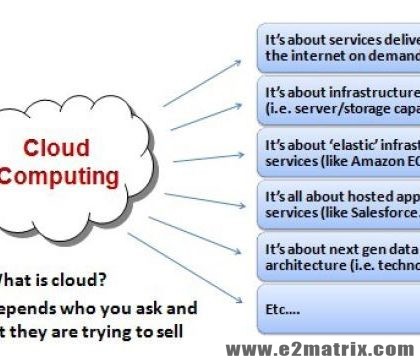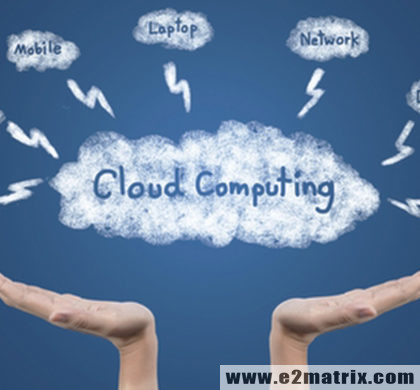SCHEDULING IN CLOUD COMPUTING

In Cloud Computing, booking assumes a fundamental part in productively dealing with the PC administrations; it is the movement of enrapturing choices in regards to the allotment of accessible limit and/or assets to employment and/or clients on time. A large number of clients offer cloud administrations by presenting their a great many processing errands to the cloud computing environment. Booking of these a large number of an undertaking is a conflict to the cloud environment. The planning emergency in the cloud makes it hard to work out, dominatingly on account of vast composite employments like work processes. In the meantime, the scheduling techniques concentrate on throughput, productivity, space, the expense of time and enhance the class of administration of the whole cloud computing environment.
Scheduling is the procedure of assigning errands to accessible assets on the premise of undertakings’ qualities and need. The fundamental objective of planning has expanded the use of the assets without influencing the administrations gave by cloud. There are two sorts of booking i.e. asset booking and employment planning. Taking after are some needs of planning in cloud computing.
- Fair resource allocation – Scheduling is done so that allocation of resources is done in fair manners.
- Quality Of Service (QoS) – Resources and jobs are scheduled in such a way so that quality of services is achieved.
- Resource utilization – It is the degree to which the resources of the system are utilized. A good scheduling algorithm provides maximum resource utilization.
- Energy consumption – It is the degree to which the resources of the system are consumed. A good scheduling algorithm saves energy consumption.
Scheduling process in cloud is divided into three stages namely;
- Resource discovering and filtering: In Resource discovering and filtering the datacenter broker discovers the resources present in the network system and collects status information about the resources.
- Resource selection: In Resource selection, the target resource is selected based on the requirements of task and resource. This is a deciding stage.
- Task allocation: In task allocation, the job is assigned to chose asset. The clients will just need to present the errand and determine the details with that of their prerequisites. Everything else is taken care of by the dealer of the cloud supplier. The undertaking is doled out to the asset of the virtual machine and executed.
Figure: A block diagram of the scheduling process
With computing frameworks being moved to cloud-based frameworks dynamically, one of the principle qualities is that it takes a shot at a pay-as-you-use premise. A few studies endeavored to characterize the scheduling issue on cloud frameworks as the work process issue, which can be further ordered into two levels: administration level (stage layer and static booking) and errand level (brought together asset layer and element planning). Unique in relation to network computing, the client can introduce their projects on the virtual machines (VMs) and decide how to execute their projects on the cloud computing framework. Therefore, albeit both frameworks registering and cloud computing are heterogeneous, the key issues they face are altogether different. A recent illustration is the expense and inertness of information exchange in these situations. That is the reason some studies added more contemplations to their meanings of planning on the cloud. Case in point, several studies, utilized coordinated directed – acyclic-graph (DAG) to characterize the scheduling issue on the cloud. There are such a variety of calculations for booking in cloud computing. The principle point of preference of planning calculation is to get a superior. The principle case of scheduling calculations are Max-Min, Min-Min, Round Robin, FCFS and Metaheuristic calculations are (ACO, PSO, SA, GA, and TS). Today huge numbers of the inquiry about are applying Heuristics Algorithms on planning to tackle complex issues and give ideal arrangements. Essentially heuristic is an issue particular i.e. it essentially to utilize space learning to accelerate the arrangement. It utilizes a “Strategic Guess” to locate the conceivable arrangements.
- JOB SCHEDULING
The Job administration is the key idea of cloud computing frameworks undertaking scheduling issues are fundamental which identifies with the proficiency of the entire cloud computing framework. Job scheduling is a mapping instrument from clients’ undertakings to the suitable determination of assets and its execution. Job scheduling is adaptable and advantageous. Occupations and employment streams can be booked to run at whatever point required, in view of business capacities, needs, and needs.
Cloud comprises of various assets that are distinctive with one other by means of some methods and expense of performing undertakings in cloud utilizing assets of cloud is diverse so booking of assignments in cloud is not the same as the conventional techniques for planning thus planning of errands in cloud require better regard for being paid on the grounds that administrations of cloud rely on upon them. Assignment planning assumes a key part to enhance adaptability and unwavering quality of frameworks in the cloud. The principle purpose for planning undertakings to the assets as per the given time-bound, which includes discovering a complete and best grouping in which different assignments can be executed to give the best and agreeable result to the client. In distributed computing, assets in any structure i.e. glasses, firewall, system are dependably powerfully allotted by succession and prerequisites of the undertaking, subtasks. Along these lines, this leads errand planning in a cloud to be a dynamic issue implies no prior characterized arrangement might be helpful amid handling of assignment. The purpose for the planning to be dynamic is that since a stream of the undertaking is unverifiable, execution ways are likewise dubious and in the meantime assets accessible are additionally indeterminate on the grounds that there are various assignments are available that are sharing them at the same time in the meantime. The planning of assignments in cloud implies pick the best reasonable asset accessible for execution of undertakings or to allot PC machines to errands in such a way, to the point that the fruition time is minimized as could be allowed. In booking calculations rundown of errands is made by offering need to every single undertaking where the setting of the need for various assignments can be founded on different parameters. Undertakings are then picked as indicated by their needs and relegated to accessible processors and PC machines which fulfill a predefined target capacity. Scheduling is only the mapping of assignments and assets as per some specific standards for accomplishing the fancied objective. Cloud computing worldview disentangles the mapping of errands to assets; the required assets together shape to be virtual machines (VMs),
Scheduling Types
- Static scheduling: schedule tasks in known environment i.e. it as of now has the data about the complete structure of undertakings and mapping of assets before execution, evaluations of errand execution/running time.
- Dynamic scheduling: must rely on upon the submitted undertakings to cloud environment as well as the present conditions of the framework and PC machines to settle on scheduling choice.
Need of Job Scheduling
The task scheduling objectives of Cloud computing is giving ideal assignments planning to clients, and give the whole cloud framework throughput and QoS in the meantime. Taking after are the necessities of occupation planning in cloud computing:
- Load Balance – Load adjusting and assignment booking has firmly related to each other in the cloud environment, errand planning component in charge of the ideal coordinating of undertakings and assets. Assignment booking calculation can keep up burden adjusting. So stack adjusting turns into another imperative measure in the cloud.
- Quality of Service – The cloud is, for the most part, to give clients processing and cloud storage administrations, asset interest for clients and assets supplied by the supplier to the clients in such a path along these lines, to the point that nature of administration can be accomplished. At the point when job scheduling administration comes to occupation assignment, it is important to ensure about QoS of assets.
- Economic Principles – Cloud computing assets are generally appropriated all over the world. These assets may have a place with various associations. They have their own administration approaches. As a plan of action, cloud computing as indicated by the distinctive necessities, give applicable administrations. So the interest charges are sensible.
- Best running time – occupations can be isolated into various classes as per the necessities of clients, and after that set the best running time on the premise of various objectives for every errand. It will enhance the QoS of task scheduling by implication in a cloud situation.
- The throughput of the system – Predominantly for cloud computing frameworks, throughput is a measure of framework job scheduling upgrading execution, and it is likewise an objective which must be considered in the plan of action improvement. Expand throughput for clients and cloud suppliers would be an advantage for them both.




